Quingila Hebo
Over the last two decades, Angola has undergone countless transformations, from the simplest through to the most complex. There have been four legislative election cycles, participation for the first time in the final phase of a world championship, hosted CAN – the African Football Championship and put a satellite up into orbit.
The history of Angola over the last two decades started out in 2002 with the signing of the peace agreement on 4 April. The country had been afflicted by armed conflict throughout the previous 27 years. Economic activities were mostly subsistence based, above all relying on the informal economy. The armed conflict turned the Angolan capital, Luanda, into a huge open-air market that became known as Roque Santeiro, where it was nevertheless possible to purchase pretty much anything. Public policies were almost non-existent.
Two decades ago, the country’s main export product was, as it still is today, oil. Highways, bridges, schools and hospitals were either absent or existing only extremely precariously. Infrastructures gradually began to get built as from the year Cunha Vaz & Associados (CV&A) was founded, thus, in 2003.
Six years on from signing the peace agreement, Angola held its first elections with the MPLA emerging as the clear winner on 81.64% of the votes. A total of 14 parties participated in this election following their respective recognition by the Constitutional Court. In general terms, on the political front, the 2009-2012 Government Program sought to endow continuity to the consolidation of peace. In the social sector, the government, then led by José Eduardo dos Santos, promised to improve the living conditions of the population by the construction and reconstruction of infrastructures essential to the mobility of people and goods and thus boosting economic activities.
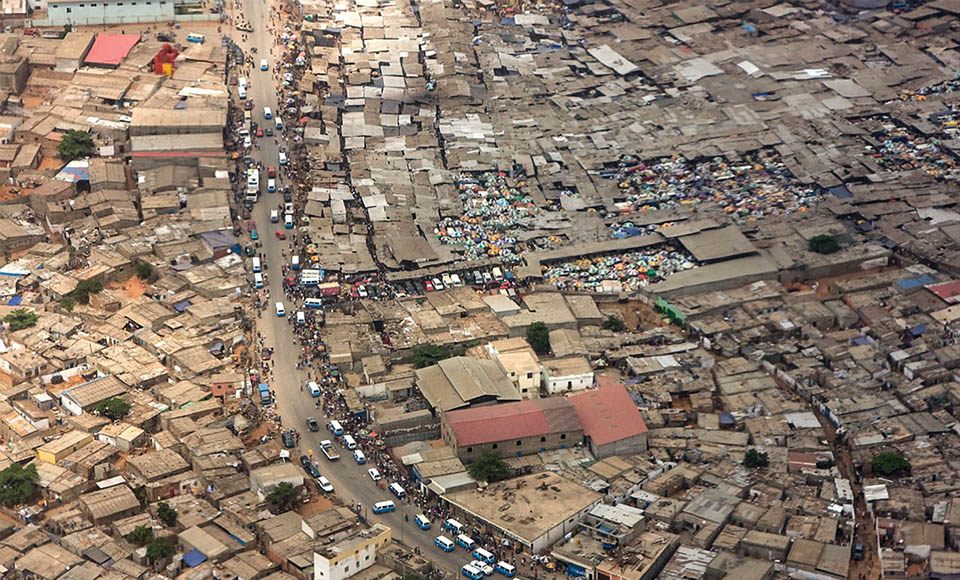
Mercado Roque Santeiro
After winning the elections in 2008, the government advanced further with its building program, repairing the roads, bridges and dams that had been totally or partially destroyed during the war. Among these was the Luanda Marginal, a coastal road that is the capital’s picture postcard highlight, and the São Miguel Fortress, which was converted into a Military Museum and opened to the public.
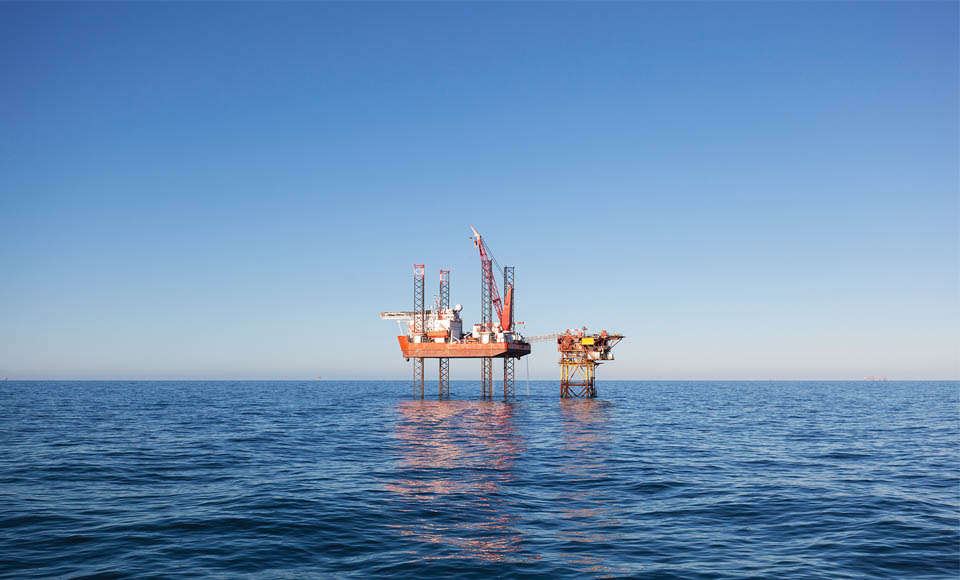
Petróleo, a riqueza do país
The country went through a phase of development with visible consolidation in terms of macroeconomic stability, with positive reflections on the exchange rate and the rehabilitation and modernisation of the main productive and social infrastructures and embarking on a trajectory of robust economic growth, an essential condition to reducing hunger and poverty and fostering social stability. This was also a period when Angola’s main export (oil) was registering high prices.
Inflation also embarked on a clearly downwards trend, especially as from 2003. The annual rate fell from 105.6% in 2002 to 11.38% in 2011.
Angola entered into a phase of double digit growth and was positioned as one of the most dynamic markets worldwide in the latter year.
Government figures report that the economic growth that the country registered in this period, in conjunction with the social policies put into practice, produced sharp declines in the incidence of poverty in Angola, plunging from 68% of the population in 2002 to 36.6% in 2009.
African potential
In 2006, the country boosted its global profile by reaching the finals of the FIFA World Cup. Although the team got knocked out in the group phase, the country began to attract more tourists and foreign direct investment. Four years later, in 2010, the country welcomed the African Football Championships. Thirty-two of the 54 countries making up the African continent qualified for Angola, an event that counted on CV&A for its organisation after the latter had moved to open an office in Luanda in the preceding year.
However, while the country’s results in football have always been modest, the history of basketball is rather different. The Angola male national team has been unstoppable and picking up 12 consecutive African championships. It is a similar story in handball where the female national team earned the nickname “Angolan pearls” due to their relentless winning.
However, it was not only in sport that got the country into the spotlight. Angola became the third largest economy on the continent, taking a role as an African powerhouse. Major companies such as Omatapalo and MCA began investing in the Angolan market. For example, Omatapalo was responsible for building the Kilamba Arena in record time to host the World Roller Hockey Championship in 2013.
Culture and Tourism represent another two facets that have interlinked to attract visitors over these last 20 years. Indeed, Angola picked up the stamp of what has become one of the major factors of tourism attraction: in the capital of Zaire Province, Mbanza Congo, the former centre of the Kingdom of Congo, was classified as UNESCO World Cultural Heritage. The country also staged a competition to select its own natural beauties, which became known as “The 7 Wonders of Angola”. And, alongside the hosting of the World Tourism Forum, Angola began perceiving itself as a country open to the world.
This was also a period in which Angolan artists, ranging from music to the fine arts, strode onto international stages. The musical style of Kuduro, sung and danced by the youth in the peripheries of Luanda, became a fashion that went global and with more romantic music winning fans in other markets with Anselmo Ralph singing “Então agora não me toca…”. Then there was the spice of Kizomba to win over new publics and the country seemed set on the right track.
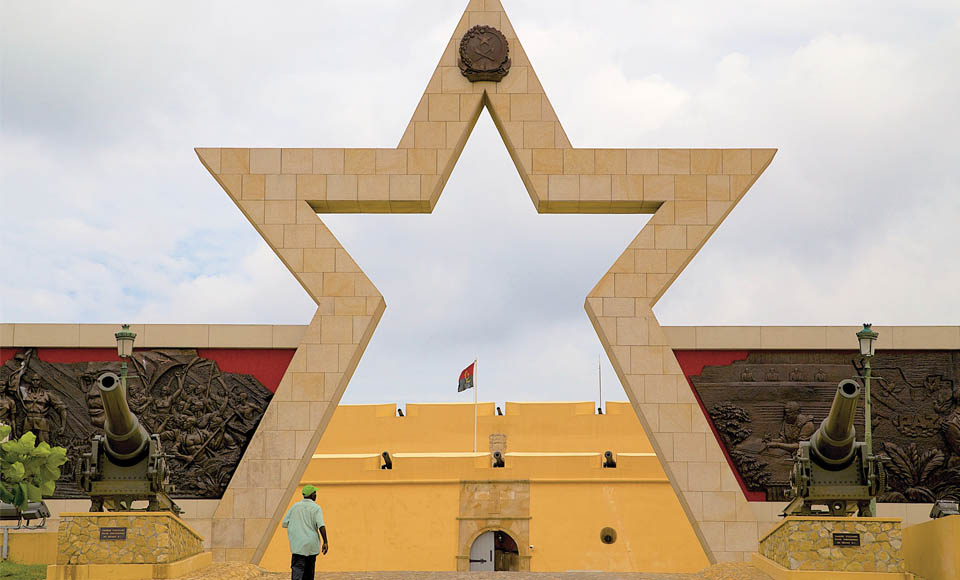
Fortaleza S. Miguel
Political transition
Angola had been governed by the same man throughout 40 years, picking up the title of “Architect of Peace”. José Eduardo dos Santos (JES) took over the country’s destiny four years after it became independent in 1979 and left power in August 2017.
In the last five years of his rule, the national situation deteriorated. José Eduardo dos Santos faced protests even while driving ahead with an aerospace program. In 2017, with JES still at the helm, Angola launched its first satellite into orbit but which stopped functioning eight days later. This incident served to feed the wave of protests that had already been ongoing since 2015. The economy had stopped growing, with hyperinflation prevailing, people lost their purchasing power and, correspondingly, the standards of living among the population plummeted with young persons, unemployed and without hope for the future, protesting to demand a change in government. To a large extent, this wave of protests finally led to a change in president. Thus, on 23 August 2017, João Lourenço, leader of the MPLA, won the elections and was sworn in as President of Angola, becoming the third president in the national history of Angola and the second to be democratically elected.
The new president faced a country in a complex situation. Indeed, while the period between 2012 and 2017 was fairly challenging to the extent that the economic situation placed many citizens in precarious conditions. In his State of the Nation speech, a couple of months after the election, President João Lourenço recognised that the country was in a difficult economic and financial position following the collapse in the international oil price and the consequent lack of foreign exchange liquidity, a situation already existing since late 2014.
Corrective measures
Clearly, economic hardship bears repercussions throughout every social sphere, triggering difficulties in accessing education, health, basic sanitation and employment. Faced by the scale of national economic difficulties, in 2018, the government advanced with corrective measures through the implementation of the Macroeconomic Stability Program.
In the wake of this program, beginning in January of this same year, and for the first time in three years, the country registered a positive budgetary balance. The exchange rate delays stretching from 2015 to 2017 disappeared and with financing in the hands of commercial banks bringing to an end the lists of companies and actors with privileged access to foreign exchange in keeping with subjective criteria. The difference between the informal and parallel exchange rate, which hit 150% in December 2017, fell back to around 35%. This process enabled the return of the formal economic circuit for transactions made with external markets.
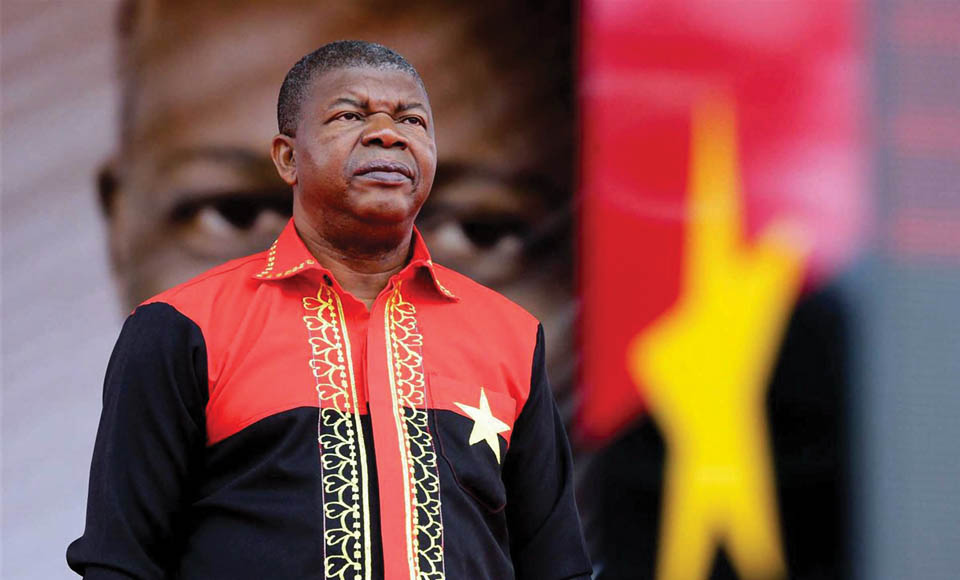
João Lourenço, cabeça de lista do MPLA, ganhou as eleições e foi empossado como Presidente de Angola em 2017
The Foundation Law for Financial Institutions, Combat of Money Laundering and Financing of Terrorism, the Payment System of Angola and the Law establishing the BNA – the Bank of Angola were all subject to review. In the case of the BNA, the institution gained political independence and thus became able to perform its role in effectively guaranteeing the stability of the financial sector.
Within the scope of efforts to relaunch the economy and boost the level of employment, the government focused its policies on revitalising the productive bases of the company. The state thus invested in supporting the private sector, to improve the competitiveness and capacities of companies. This led to the launching of PRODESI – the Support Program for the Production, Diversification of Exports and Substitution of Imports and identified 54 products where national production may reach self-sufficiency in terms of national consumption and thus eliminating the need for any imports.
There was also the simultaneous implementation of PAC – the Credit Support Program signed with eight commercial banks, the Development Bank of Angola and the Credit Guarantee Fund, memoranda for the operational implementation of a credit line with favourable interest rates and totalling 141 billion kwanzas (around 250 million euros) in 2019.
Within this framework, the BNA issued a ruling that stipulated commercial banks had to apply at least 2% of their assets to granting credits to the real economy for the production of the products selected under PRODESI that fail to meet internal levels of demand as well as support for non-oil sector export products, including ornamental rocks, coffee, wood, fish and shellfish, tropical fruits, among others.
The government also carried out widespread changes to customs duties in order to establish the necessary alignment between the import of stable goods and other priority products and the national production of these same products, thereby converting them into a tool for supporting the growth in national output.
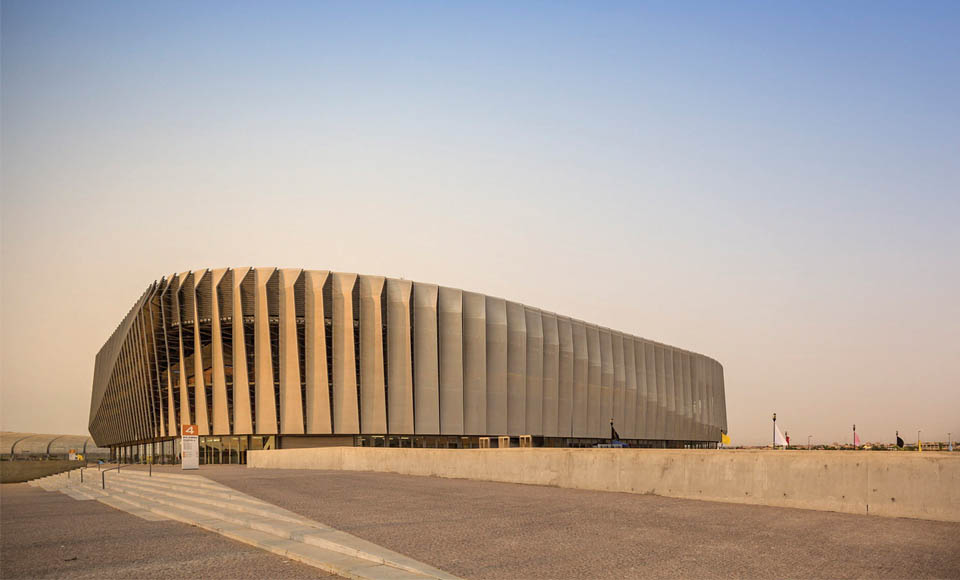
Arena de Kilamba
In 2017, the government also advanced – before concluding in 2018 – with the settlement of debts to several oil companies that had been accumulating since 2002, for the amount of 1.5 billion dollars.
In late 2018, agreement was reached with the IMF for an Extended Financing Program for the 2018-2021 period for a total amount of $3.7 billion. Furthermore, three financing agreements were reached with the World Bank for the total of $1.32 billion.
In 2019, the Government launched the Privatisations Program that planned to dispose of 195 state companies or other assets, with 32 classified as benchmark companies. Through to 2022, 94 state companies and assets were sold off and the state registered 566.33 billion kwanzas (around €1 billion). Public tenders to employ new state employees, which had been halted due to the crisis in in 2014, were again restarted in 2018 and 2019, particularly for the health and education sectors and thereby recruiting 31,875 new members of staff for these two sectors.
In June 2019, the Government launched PIIM – the Integrated Municipality Intervention Program. The Executive sourced two billion dollars from the Sovereign Fund to build municipal level infrastructures and generate employment, especially for young persons. The implementation of PIIM, which remains ongoing, seeks to undertake 1,700 projects across the entire country.
There was also the enactment of a new Private Investment Law that, among other measures, enabled foreign direct investment in Angola of any amount and without the requirement of incorporating an Angolan partner into the shareholding structure.
AIPEX – the Private Investment and Export Promotion Agency of Angola became a single window for promoting and attracting private investment and providing support for exports. Through to the end of August 2019, AIPEX registered a total of 178 investment intentions with a potential total of around $1.65 billion and the capacity to produce 13,900 direct employment positions.
A large part of these corrective measures underwent implementation in 2018 and 2019. This resulted in Angola rising two places in the global index evaluating national Business Environments in 2018.
In 2022, the new government moved to correct the launch of the first Angolan satellite with the country henceforth counting on its own space satellite.
Spotlight on the PGR
The PGR – the Attorney-General of the Republic used to be a practically unknown figure in the Angolan justice system. Between 2012 and 2017, the Angolan PGR had opened only 18 cases in a country experiencing rampant corruption.
In 2018, there was the restructuring and relaunch of the National Directorate of Prevention and Combat of Corruption which, in comparison with the 18 PGR cases prosecuted between 2012 and 2017, advanced with 192 inquiry processes between 2017 and 2019, thus, in two years, there were ten times the cases than in the five preceding years.
Among these processes were those that grabbed headlines worldwide and even came with its own international dossier, Luanda Leaks. The revelations of a consortium of journalists portrayed how the business empire of Isabel dos Santos and Sindika Dokolo, her recently deceased husband, had syphoned off fortunes from the Angolan state. This triggered a judicial and political battle between the first-born daughter of former President José Eduardo dos Santos and the Angolan state that remains ongoing.
Equally, the eldest son of the ex-president, Zenu dos Santos, was found guilty of the crimes of fraud and the trafficking of influence in a process that became known as the “500 million case”.
In addition, the former Minister of Transport, Augusto da Silva Tomás, another prominent figure in Angolan politics this century, was tried and found guilty.
These legal cases, and others, reflect a turning point in the Angolan justice system. The climate of impunity that had shrouded Angolan politics has begun to slowly dissipate.
In December 2018, there was the launch of SENRA – the National Asset Recovery Service, an entity under the auspices of the PGR that played an important role in the investigations that led to the reaching of an agreement between the Sovereign Fund of Angola and the entity undertaking its asset management, with the former receiving capital of $2.35 billion as well as property assets owned internationally with a total value in the vicinity of $1 billion.
Through these restructurings and actions, the Attorney-General of the Republic demonstrated signs of its existence and finally established its reputation both nationally and internationally.
The people’s lives
The quality of life of the Angolan population has registered significant improvements over the last two decades. A considerable middle class has emerged who are also more demanding as regards the design and implementation of the public policies in effect. Despite the significant progress made since the first year of peace, there remain problems across the housing, sanitation, education and healthcare sectors. According to the national statistics institute, the INE, since 2014, the population has grown by a rate of 3% even while growth in the economy and in public policy expenditure designed to improve the standards of living of Angolans, has not been able to keep pace.
In the education sector, following the advent of peace, Angola underwent a genuine revolution. The number of students registered in primary and secondary schools tripled while university students boomed almost tenfold through to 2012. Nevertheless, there still remains the challenge of improving the quality of teaching which, in broad brush terms, also undermines the quality of the ‘made in’ Angola labour.
In his State of the Nation speech in October 2018, President João Lourenço recognised that the campaign to cut the unemployment rate, through the creation of new jobs, should be constant and not only the responsibility of the government but also involving the private sector. Two years later, in October 2022, and making the same speech, the President reported that a total of 491,000 new jobs had been created in the 2018-2022 period.
In order to minimise the needs of the most vulnerable members of society, those living on less than a dollar per day, the government designed and implemented a direct transfer payment system: the Kwenda Program that gives support to families facing extreme poverty and great vulnerability. Through to October 2022, over 800,000 persons had been registered and almost 600,000 were already in receipt of a monthly pension of 8,000 kwanzas (around 15 euros). Following the success of this program, the government is now studying the scope for broadening the scope to more households while raising the amount from 8,000 to 11,000 kwanzas (around 20 euros).
In addition to improving the living standards of those facing extreme poverty, there is also the ongoing Integrated Local Development and Combat of Poverty Program, national and multi-sectoral in scope, this seeks to foster socioeconomic inclusion and involves initiatives designed to provide primary healthcare, access to water and sanitation, schools meals, as well as employment assistance, among other measures.
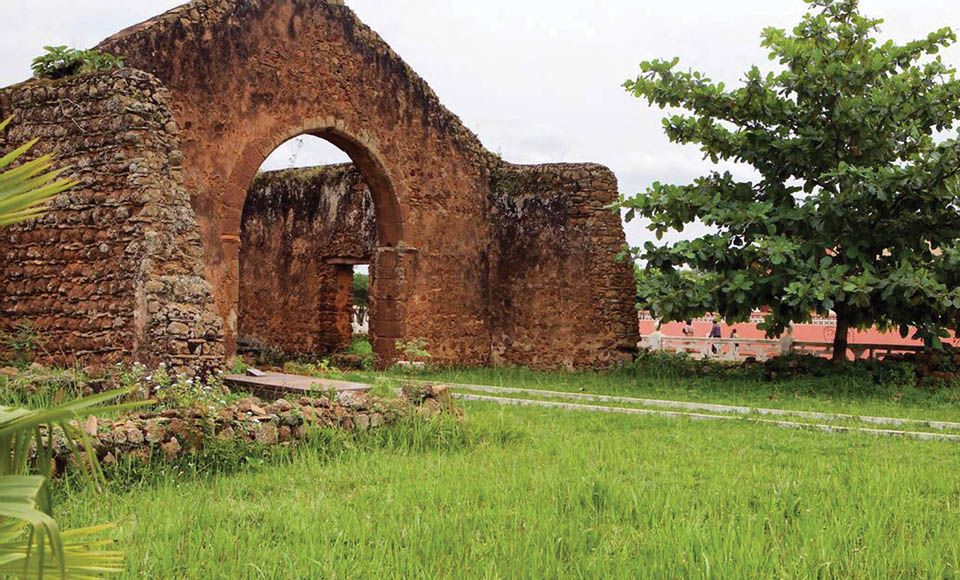
Mbanza Congo, antiga capital do Reino do Congo, foi classificada como Património Cultural da Humanidade pela UNESCO
Twenty years with more energy
Anyone living in Luanda between 2003 and 2015 will never forget the deafening sound of generators working, many for hours on end. To change this scenario, the government has been working since 2012 to restore and expand the main national dams, especially Cambambe, Laúca and Caculo Cabaça, where construction still remains ongoing.
In the last two decades, the government acted in reflection of its understanding of the energy sector as fundamental to the development of national manufacturing. This sector has been the recipient of the greatest public investment and has turned in the best results.
Nowadays, blackouts in Luanda have dropped significantly. The country now has an electrification rate of over 40% against the 36% level in 2017. The capacity of the national grid rose from 2.4 gigawatts in 2017 to almost 6 gigawatts in early 2022 and the number of household connections surged from 1.27 million to 1.78 million over the same period.
Considering the scale of the Angolan territory, there is still much to do to guarantee energy for all. Everything suggests that the authorities are aware of this as they have already targeted the diversification of the energy mix, building solar powered facilities for rural regions where the hydro-generated energy network does not reach.
Implementation of central hospitals
The health sector has hitherto been the weakest link in public policies in Angola. There has been considerable improvement in the quantity of hospitals but patients constantly complain about the lack of both medication and specialist staff for their care. In turn, health professionals demand better working conditions and higher salaries. Following the noticeable changes in this sector over these two decades, the government has now perceived the need to build community healthcare units and central hospitals. The government strategy involves endowing every provincial capital with a hospital capable of resolving problems with medium and high complexity, thereby reducing the incidence of the emergency transport of patients to Luanda or to outside the country with citizens able to resolve their health problems close to their place of residence. Within this scope, while there still remain major shortcomings, 2020 and 2021 saw the inauguration of various primary health posts. With new hospital facilities, the state also cut the costs of 286 patients receiving medical care in Portugal, of which 48 had renal problems with a proportion having now received transplants, as well as 152 accompanying carers.
The social sector, with a particular incidence on health and education, was the major challenge of the last two decades and still remains at the top of the list of national concerns despite the significant improvements made, especially in the last four years.






